Puppies can’t feed on their mother forever. They and their moms both need a break from one another. Just like human babies, you need to care for the puppies during this weaning period. Otherwise, you may end up not providing enough nutrients and power for the puppies.
So, what do you need to do in this situation? You have to give the puppies food other than their mom’s milk. More specifically, you need to start giving the puppies dry food. But can they eat dry food out of nowhere? No. They can’t.
For this reason, you have to soften the dry food by adding water or other liquids. But you can’t keep on soaking the puppy food either. That may make your puppy choosy. The puppy may never eat anything other than soggy food. We are going to discuss everything about when to start and when to stop soaking puppy food. Stay tuned till the end.
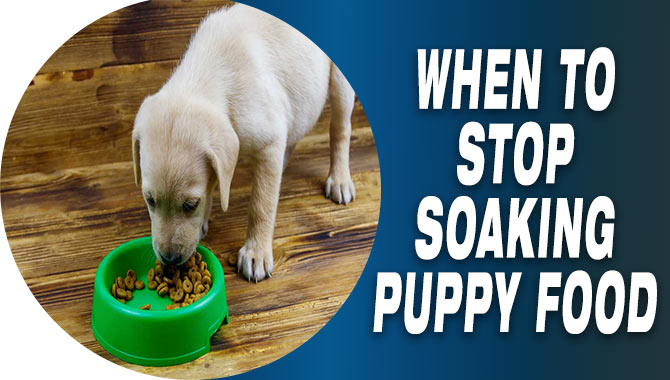
When To Give Puppies Dry Food?
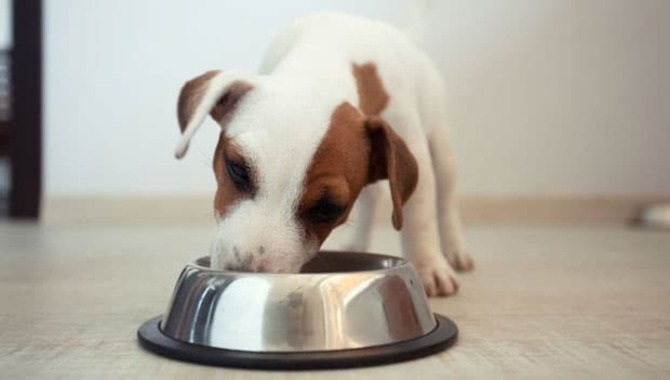
Deciding when to introduce dry food to puppies can be a bit of a challenge. Typically, puppies will start eating solid food around 3-4 weeks of age, but it is important to start with wet or moistened food to make it easier for them to digest.
Around 6-8 weeks of age, you can begin incorporating dry food into your diet. It is important to choose a high-quality puppy food that meets their nutritional needs and offers the right balance of protein, fat, and carbohydrates.
You may also want to consider consulting with your veterinarian for advice on when and how to transition your puppy to dry food.
Puppies can’t drink their mom’s milk forever, right? They can’t keep on drinking their mother’s milk because of two reasons. First, around 4 weeks of age, puppies don’t get enough nutrients from their mother’s milk. Second, their mothers need independence from the puppies. The independence starts from weaning, slowly and steadily.
To overcome this situation, you need to give the puppies dry food. There are special dry foods for puppies in the market. Try to buy those because adult dogs eat different kinds of foods. Plus, the size of the food is also smaller, which is suitable for the puppies.
Why Do You Need To Soak Puppy Food?
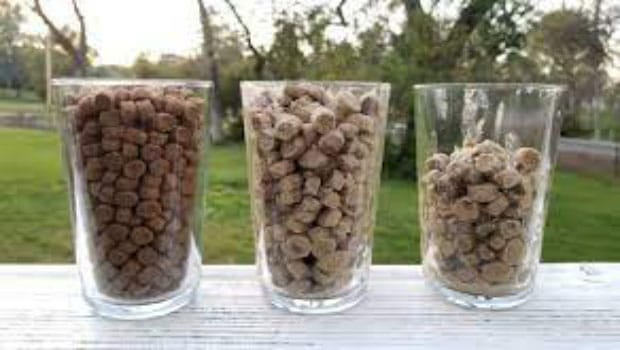
Soaking puppy food is a common practice among dog owners and for good reason. There are several benefits to soaking your puppy’s food before serving it to them. One of the main reasons is that it can make the food easier to digest, particularly for puppies with sensitive stomachs.
Soaking also helps to soften the kibble, making it more palatable for young puppies who may have difficulty chewing hard pieces of food. Additionally, soaking can help to prevent dehydration in puppies, as they will be consuming additional water through the soaked food.
Soaking puppy food is an important step in ensuring that your furry friend gets the nutrients they need. Puppies have delicate digestive systems, and their bodies may not be able to break down dry kibble as effectively as adult dogs.
By soaking their food, you can help to make it easier for them to digest and absorb the essential vitamins and minerals they need to grow into healthy adults. Soaking can also help to prevent choking and promote hydration, which is especially important during the hot summer months.
As a general rule of thumb, it’s recommended to soak puppy food for at least 20-30 minutes before feeding it to your pup.
Let’s Check Out When To Stop Soaking Puppy Food?

As puppies grow, their nutritional needs change and so does their ability to digest food. When it comes to soaking puppy food, it is generally recommended to stop once they are around three to four months old. By this time, their teeth should have fully developed and they should be able to chew and digest dry kibble without any issues.
However, it is important to monitor your puppy’s behavior and digestion when transitioning from soaked to dry food. If they experience any discomfort or digestive problems, you may need to continue soaking their food or consult with a veterinarian for advice on how to transition them to dry kibble properly.
Most puppies will have a full set of grown baby teeth in that time. They will be able to eat completely dry food at this age. You need to be careful at this stage. Even if they have the ability to eat completely dry food, it does not mean they are prepared to eat dry food. You have to give the puppies some time to adapt to the situation. Knowing when to stop soaking puppy food is important too.
Solutions To Stop Soaking Puppy Food
Soaking puppy food can be a helpful way to make it easier for young puppies to eat and digest their food. However, at some point, you may want to wean your puppy off of soaked food and transition them to dry kibble. Remember, every puppy is different and may take longer or shorter periods of time to adjust to new foods. Be patient and consistent with your approach and consult with your veterinarian if you have any concerns about your puppy’s diet. Here are some tips on how to stop soaking puppy food:
- Gradually reduce the amount of water you add to the food over several days or weeks.
- Mix in small amounts of dry kibble with the soaked food to help your puppy get used to the texture.
- Offer small amounts of dry kibble as treats throughout the day to encourage your puppy to try it.
- If your puppy is reluctant to eat dry kibble, try adding a little bit of wet food or chicken broth to it for added flavor.
Consider To Stop Soaking Puppy Food
If you’re considering whether to stop soaking your puppy’s food, there are a few things to keep in mind. Soaking can be beneficial for puppies who have trouble chewing or digesting dry kibble, as it can make the food easier to eat and can help prevent digestive issues.
However, if your puppy is able to eat dry kibble without any problems, soaking may not be necessary. Additionally, if you’re concerned about dental health, feeding dry kibble may actually be better for your puppy’s teeth than wet food.
There is a trick that you may apply to achieve this goal. Try soaking the puppy food less than the previous day. Try to make progress slowly. Observe the puppy closely during this time. If you see the puppy is having no trouble eating the less soggy food, go for even drier food. Following this process, you can make your puppy eat completely dry food at a certain age.
There may be exceptions. Be prepared for that. Don’t force the puppies to eat less soggy food. The teeth growth may not be the same for every puppy. Some puppy may grow their teeth even faster than the average, and some may grow much slower. Keep your patience in this situation.
And one more thing. The puppies may leave their mother’s milk altogether if you follow the method of puppy food soaking properly. Due to this reason, they will need more food than before. Don’t forget to increase their amount of food to keep providing enough nutrients for the puppies.
Ultimately, the decision to soak or not soak your puppy’s food should be based on their individual needs and preferences. Consulting with a veterinarian can also provide valuable insight into the best feeding method for your furry friend.
Why You Should Not Keep Giving Soggy Food To The Puppies?
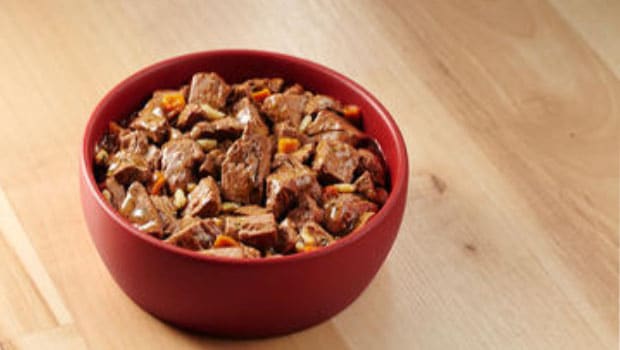
As we have mentioned earlier, most of puppies will surely like eating soggy food forever. But there are some problems with this method. The first one is, the puppies may become choosy while eating food. They may never choose to eat foods other than the soaked food. Another problem is, you can’t keep caring for the puppies as they age.
Feeding puppies can be a tricky business, especially when it comes to their food consistency. While it may be tempting to give them soggy food for convenience, there are several reasons why this is not a good idea. Firstly, puppies need to learn how to chew and bite properly, and giving them only soggy food can prevent them from developing these skills.
Secondly, soggy food can promote bacterial growth and increase the risk of infections or digestive issues in puppies. Additionally, feeding your puppy only soggy food may lead to picky eating habits in the future, as they may become accustomed to this texture and refuse other types of food.
So, while it may take a little more effort, it’s important to feed your puppies a variety of textures and consistencies for their overall health and well-being.
When To Stop Soaking A Puppy’s Complete Food
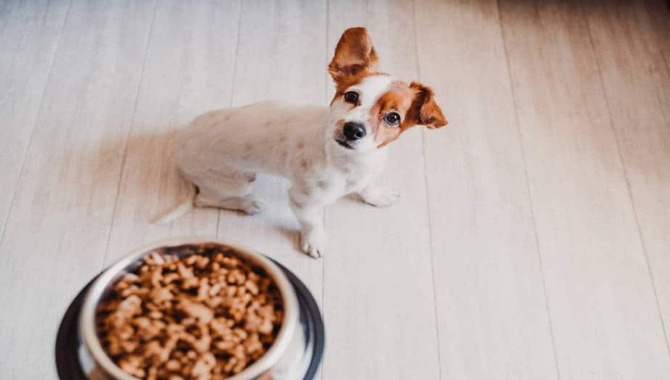
It is a well-known fact that dogs have a fantastic sense of smell. People who own pets know they can sniff everything from a delicious piece of meat to an extra dirty sock. Dogs can determine the time of day and sometimes even tell an owner that someone has died in their house.
Knowing when to stop soaking a puppy’s complete food can be confusing, especially for new pet owners. Soaking dry food is often recommended for puppies to aid digestion and make it easier to chew.
However, as puppies grow, their teeth become stronger and they are able to chew dry food more easily. Typically, you can gradually decrease the amount of water you add to their food between 12-16 weeks old.
By the time they reach six months of age, most puppies should be able to eat dry kibble without any need for soaking. It is important to monitor your puppy’s eating habits and adjust according to their needs.
When we feed our dogs, food, and water go into the mouth, down the esophagus, and into the stomach, where it is digested. As dog’s age and their teeth start to wear down from chewing bones and toys, the enamel on their teeth starts to wear off. When this happens, bacteria invade the tooth and cause bad breath.
The bacteria can eventually become a severe infection, leaving your pet limp, losing appetite, and even vomiting. If you want to prevent this from happening, it’s essential to brush your dog’s teeth regularly or have them professionally cleaned by a veterinarian or a dental hygienist.
Benefits Of Soaking Your Pet’s Dry Food
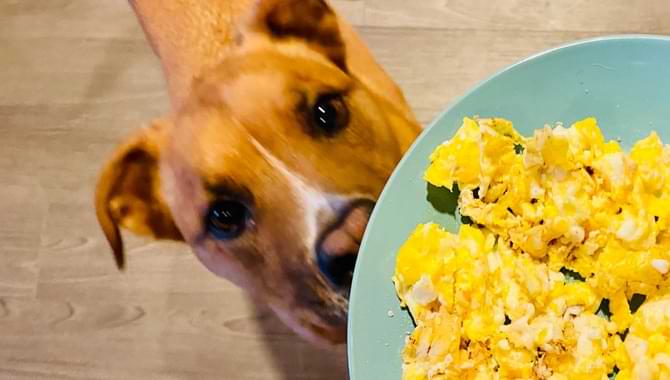
Soaking the food softens it to make it easier for your cat or dog to eat but also allows the nutrients to be absorbed more effectively and prevents them from being lost when eaten. Wet food is not just a good idea because pets are also easier on their digestive systems.
It can help reduce the risk of diabetes and allergies in dogs and cats by making their food softer. Dogs and cats who suffer from allergies benefit from the softening of the food because it can make them more accessible for them to eat.
Their digestive systems are also less stressed when they’re not constantly chewing on hard food. For cats, adding some water to their dry food when you first give it to them is a great way to make sure they’re getting enough water since they often don’t drink as much on their own.
When Can I Stop Soaking My Beagle’s Dry Food?
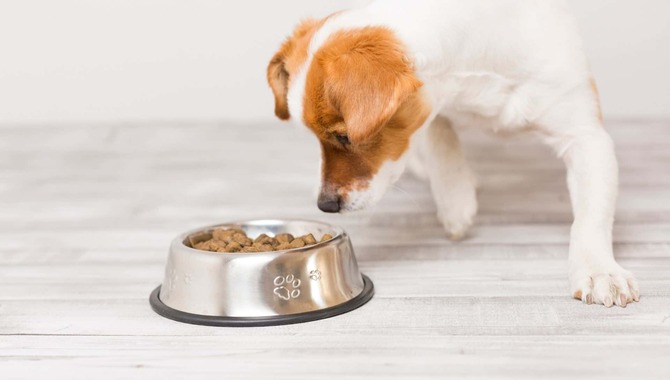
Soaking dry food for your beagle can be beneficial, especially if they have dental issues or are prone to choking. However, there may come a time when you can stop soaking their food. The age of your beagle is a key factor to consider.
Puppies and senior dogs may require softer food that is easier to chew and digest, whereas adult dogs may be able to handle dry food without any issues. It’s important to monitor your dog’s behavior and health when transitioning to dry food to ensure they tolerate it well. If they have difficulty chewing or swallowing dry food, it may be best to continue soaking it or consult your veterinarian for further guidance.
If you soak food like dry dog food, let it sit in the water for at least 8-12 hours or until it is thoroughly saturated. Once you are done soaking the food, be sure to drain out all of the moisture before serving. Leaving food in water for more than 24 hours is not a good idea. It will start to go wrong after this time period and could end up causing your dog a severe stomach ache.
To really make sure that your dog’s food is cleaned off well and rinsed thoroughly, you should use a colander. Place the dry food inside the colander and run it under cool water. Then, shake off the excess water before serving it to your dog. If you don’t have a colander, use a clean dishcloth or paper towels to pat down the food.
Conclusion
Dogs are one of the cutest creatures in the world, especially when they are puppies. At this age, they always need extra care and attention to be raised as healthy dogs. One of the stages where you need to pay extra attention is the feeding stage.
Around 4 weeks of age of puppies, you have to give them foods other than their mother’s milk. As the puppies’ teeth are not that strong at this age, you have to give them soaked foods. But you can’t keep on doing that either.
You need to stop puppy food from soaking at 8 weeks of their age. You have to do it to make sure they can start making a habit of eating different types of foods. Otherwise, your puppy may never like to eat anything other than soggy foods. Who wants that? We hope now you know when to stop soaking puppy food.
FAQs
[rank_math_rich_snippet id=”s-bcc9e2b8-a68e-45a9-8371-5fecb4bba6bc”]
Your article helped me a lot, is there any more related content? Thanks!